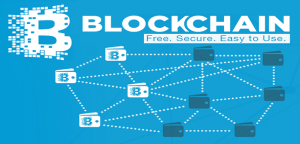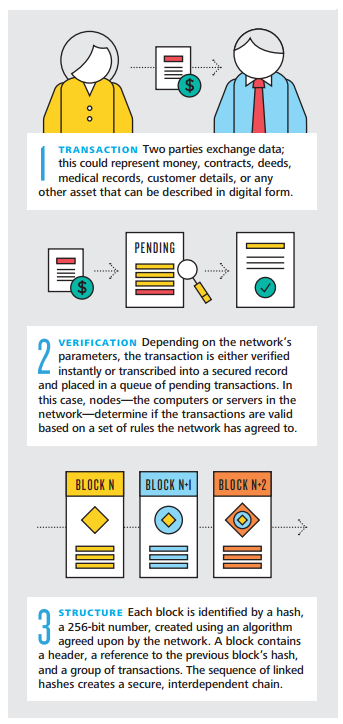
Following are the key points described later in this article:
- What is BlockChain?
- What problem can be solved using BlockChain technology?
- What are key components of BlockChain technology?
What is BlockChain?
BlockChain is a technology phenomenon which got started as a result of BitCoin system. You could access information about current bitcoin transactions on BlockChain.info website. BlockChain technology is at the heart of BitCoin Systems. Simply speaking, it is about a chain of blocks which is maintained in decentralized manner by one or more system (miners) in a distributed peer-to-peer network. Each block in this chain consists of a set of transactions. These transactions are related to an entity exchanging a unit of value with another entity. Following diagram could help you understand better:

BlockChain
What problem can be solved using BlockChain technology?
If any problem that has following as key components, BlockChain technology can be explored to solve the problem:
- Trade or Transaction involved
- Ownership
- Trust
Lets take a look at some of the very simplistic examples such as following, from non-financial, non-banking world:
- Healthcare: As per this page, “The ability to have insurance companies, hospital billing departments, lenders, and patients using one blockchain to manage payments could reduce redundancies across the entire industry”, says Winkelspecht.. He further goes on to say that Patient records can be created, shared, and appended by multiple parties, introducing efficiency and transparency to a heavily siloed industry.
- ERP: As per this page, “A blockchain system could be used to integrate supply chain of groups of businesses in an open, decentralized, traceable way.”
What are Key Components of BlockChain technology?
Following are four key aspects of BlockChain technology:
- Distributed Ledger: A distributed ledger
- Distributed Peer-to-peer network: A distributed peer-to-peer network consisting of nodes representing virtual currency (BitCoin) owners and miners. Note that miners are the nodes which mantains the entire copy of the public ledger, users’ wallets etc.
- Proof-of-work mining network: Miners (nodes) which finds solution to complex mathematical problem while processing the transactions
- Consensus algorithm: Distributed computation system which validates the blocks based on consensus, thereby, allowing blocks to be added to the blockchain.
Stay tuned as I am going to do lot of research in BlockChain technology in time to come and write about this.
- Coefficient of Variation in Regression Modelling: Example - November 9, 2025
- Chunking Strategies for RAG with Examples - November 2, 2025
- RAG Pipeline: 6 Steps for Creating Naive RAG App - November 1, 2025
I found it very helpful. However the differences are not too understandable for me